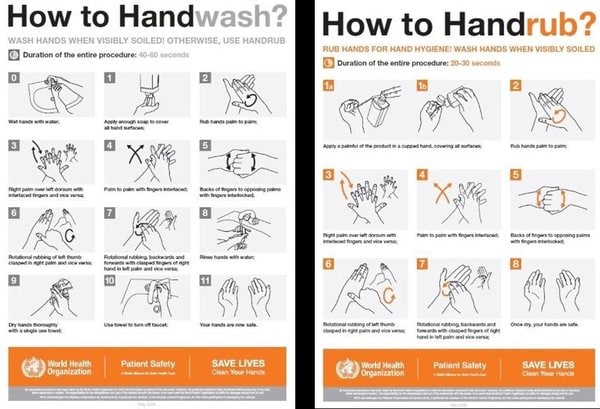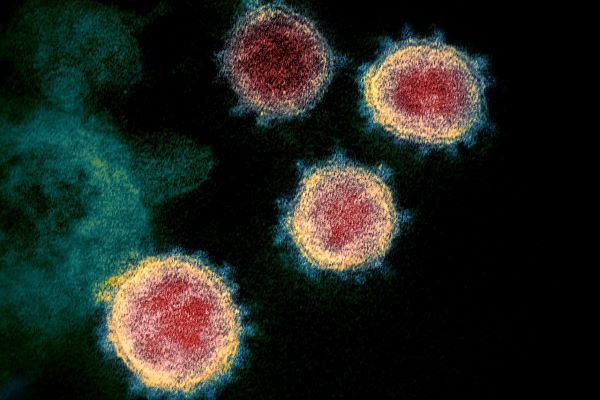Listed below is useful information about the coronavirus pandemic. Last updated July 5, 2023.
About CoV
On May 11, 2023 the Federal Public Health Emergency Declaration for COVID-19 ended. The expiration of the emergency declaration does not mean that the pandemic is over as COVID-19 continues to circulate in our communities. The end of emergency declaration reduces the flexibility government agencies have for some COVID-19 efforts. More info: What does this mean for you? – Seattle & King County PUBLIC HEALTH INSIDER
The novel coronavirus (nCoV aka COVID-19) is a strain not been previously identified in humans. It belongs to large family of viruses that cause illness ranging from the common cold to more severe respiratory diseases, including MERS-CoV and SARS-CoV.
- Common signs of infection include flu-like symptoms, as fever, cough, shortness of breath, and breathing difficulties. In more severe cases, infection can cause pneumonia and lead to more acute or fatal symptoms.
Standard recommendations to prevent infection spread include regular hand washing, covering mouth and nose when coughing and sneezing, and avoiding close contact with anyone showing symptoms of respiratory illness such as coughing and sneezing.
Washington State CoV information
Effective April 3, 2023 masking requirements in healthcare, long-term care, and correctional facilities will end in Washington State. More info: Masking requirements to end April 3, 2023 | Washington State Department of Health
We now know that COVID-19 is here to stay. It’s important to understand how to live our lives while keeping ourselves, loved ones, and our community as safe as possible. Use the tools learned so far:
- get vaccinated and boosted
- stay home if sick or exposed
- get tested if you have flu-like symptoms
- in crowded locations, wear a mask and try to keep your distance
More info: COVID-19 | Washington State Department of Health and Washington State Department of Health
Public Health — Seattle & King County
Public Health — Seattle & King County protects and improves the health and well-being of King County and works closely with the CDC. Public Health provides a wide variety of services for residents and businesses including child health, food safety, emergency preparedness, and many other issues and topics.
Public Health recommends that people at higher risk of severe illness should exercise the most caution. People at higher risk include people:
- Over 60 years of age
- With underlying health conditions including include heart disease, lung disease, or diabetes
- With weakened immune systems
- Who are pregnant
For more information about Seattle & King County Publish Health, visit: COVID-19 information and resources for King County, WA and Public Health — King County
Other Public Health agencies in the Puget Sound Region
These are the other Public Health agencies in the six counties around the Puget Sound region:
- Island County Public Health
- Kitsap County Public Health
- Skagit County Public Health
- Snohomish County Public Health
- Tacoma-Pierce County Public Health

How to hand wash posters (WHO posters)
How to wash your hands properly
The following PDF posters published by the WHO are particularly helpful in achieving properly clean hands. If your hands are soiled, you should wash them with soap and water. If you simply want to ensure your visibly clean hands are hygienic, use a hand sanitizer. In either case, you must rub thoroughly and get all parts of your hand, fingers, fingernails.
What I really like about these posters is the thorough way they describe rubbing or washing each area of the hands in order to achieve clean, safe hands. To wash thoroughly for the recommended 20-60 seconds, many people hum a tune. Two rounds of the “Happy Birthday to You” song will take you 20 seconds. Or croon your favorite pop song. From my era, that means Doo-Wop. Here is a favorite:
Papa Oom Mow Mow by Al Frazier, Carl White, Sonny Harris, Turner “Rocky” Wilson, Jr. (1962)
The Rivingtons were a 1960s group, best known for this doo-wop hit, considered by some to be the best doo wop tune of all time. These lyrics will take you about 30-seconds.
Funniest sound I ever heard
papa-oom-mow-mow, papa-oom-mow-mow
But I can’t understand a single word
papa-oom-mow-mow, papa-oom-mow-mow
If he’s serious or if he’s playin’
Ooo My My is all he’s sayin
Papa-papa-hoooo
Papa-papa-papa-hoooo
When should I wear a face mask?
For most of us, consider wearing a mask (indoors or outdoors) in public if you are in a crowded area of substantial or high transmission, or for activities with close contact with others who may not be fully vaccinated. People at high-risk should exercise the most caution since they are more likely to become seriously ill from flu, coronavirus, and pneumonia.
People at risk
- People who are older
- People with certain medical conditions
- Pregnant and recently pregnant people
More info: Your Guide to Masks | CDC
Mask-Making Instructions
There are MANY instruction sheets and videos for making cloth face masks. Here are a few using different designs for DIY homemade masks, including no sew and sewing methods:
- How to Make a Mask — Lieutenant Governor of WA (wa.gov)
- How to make a DIY reusable fabric face mask (with filter) on YouTube via link from CDC from face mask instructions on xobonmag.com.
- How to Sew a Fitted Cotton Face Mask on sweetredpoppy.com
- Cotton face mask with a pocket (PDF) on Google Drive
Centers for Disease Control
The U.S. Department of Health & Human Services, Center for Disease Control (CDC) protects Americans from disease and health threats, both foreign and domestic. Whether diseases start at home or abroad, are chronic or acute, curable or preventable, human error or deliberate attack, CDC helps communities and citizens fight disease. They cover diseases and conditions including ADHD, Cancer, COPD, Diabetes, Flu (Influenza), Heart Disease, Sexually Transmitted Diseases (STDs), and any other national health threat.
For more information, visit the CDC website.
CoV related reading
- The Deadliest Flu: The Complete Story of the Discovery and Reconstruction of the 1918 Pandemic Virus (especially Part 4 – Learning from the Past).
- How U.S. Cities Tried to Halt the Spread of the 1918 Spanish Flu.
- SARS Basics Fact Sheet
- SARS Pandemic: How the Virus Spread Around the World in 2003
- How does the novel coronavirus compare with the flu?

Electron micrograph of SARS-CoV-2 virions with visible coronae (public domain)
World Health Organization
The international World Health Organization (WHO) works worldwide to promote health and universal health coverage, serve the vulnerable with better health and well-being, and keep the world safe from health emergencies. WHO prepares for emergencies by identifying, mitigating, and managing risks to prevent emergencies. They also support development of necessary tools during outbreaks and deliver essential health services in fragile settings.
In March 2020, WHO declared the COVID-19 to be a pandemic, indicating deep concern both by the alarming levels of spread and severity, and by the alarming levels of inaction. At the time, there were more than 118,000 cases in 114 countries, and 4,291 people have lost their lives to the disease.
For more information about the WHO and their work, visit: https://www.who.int/








